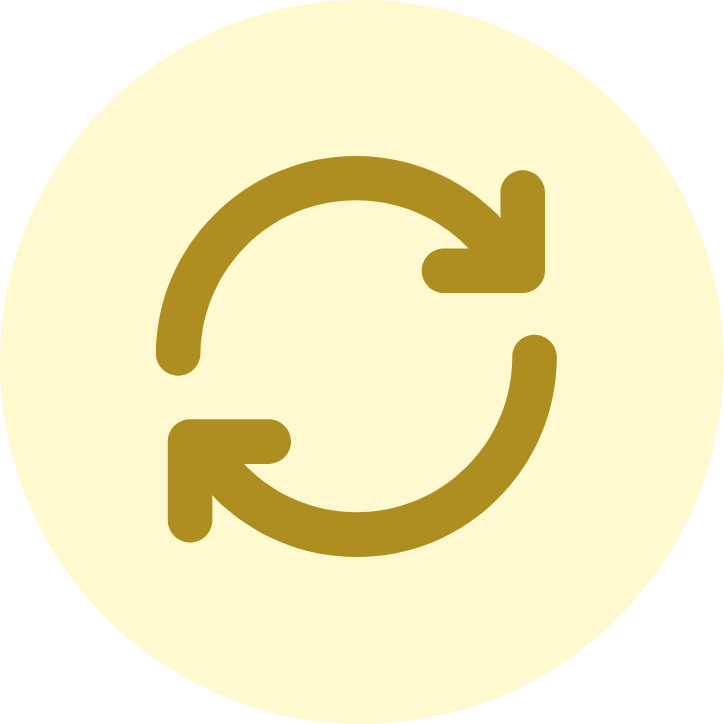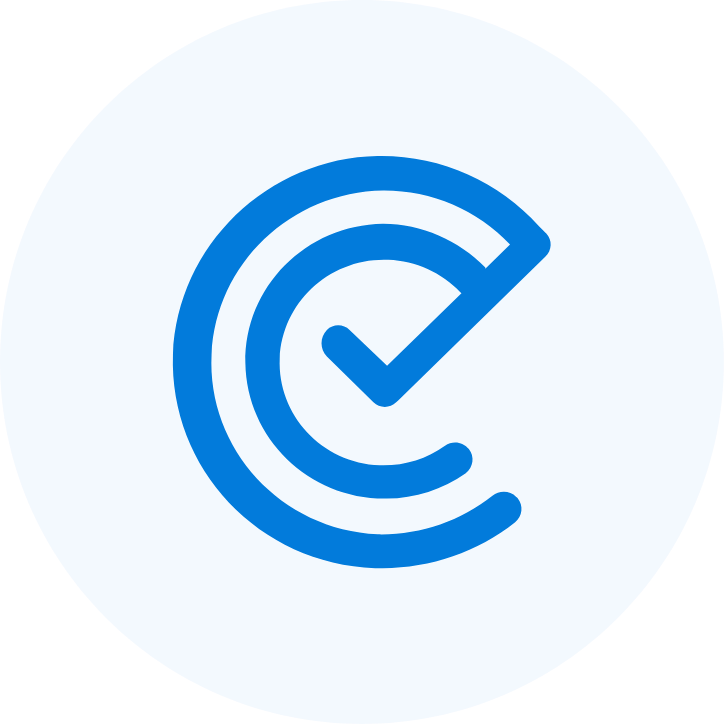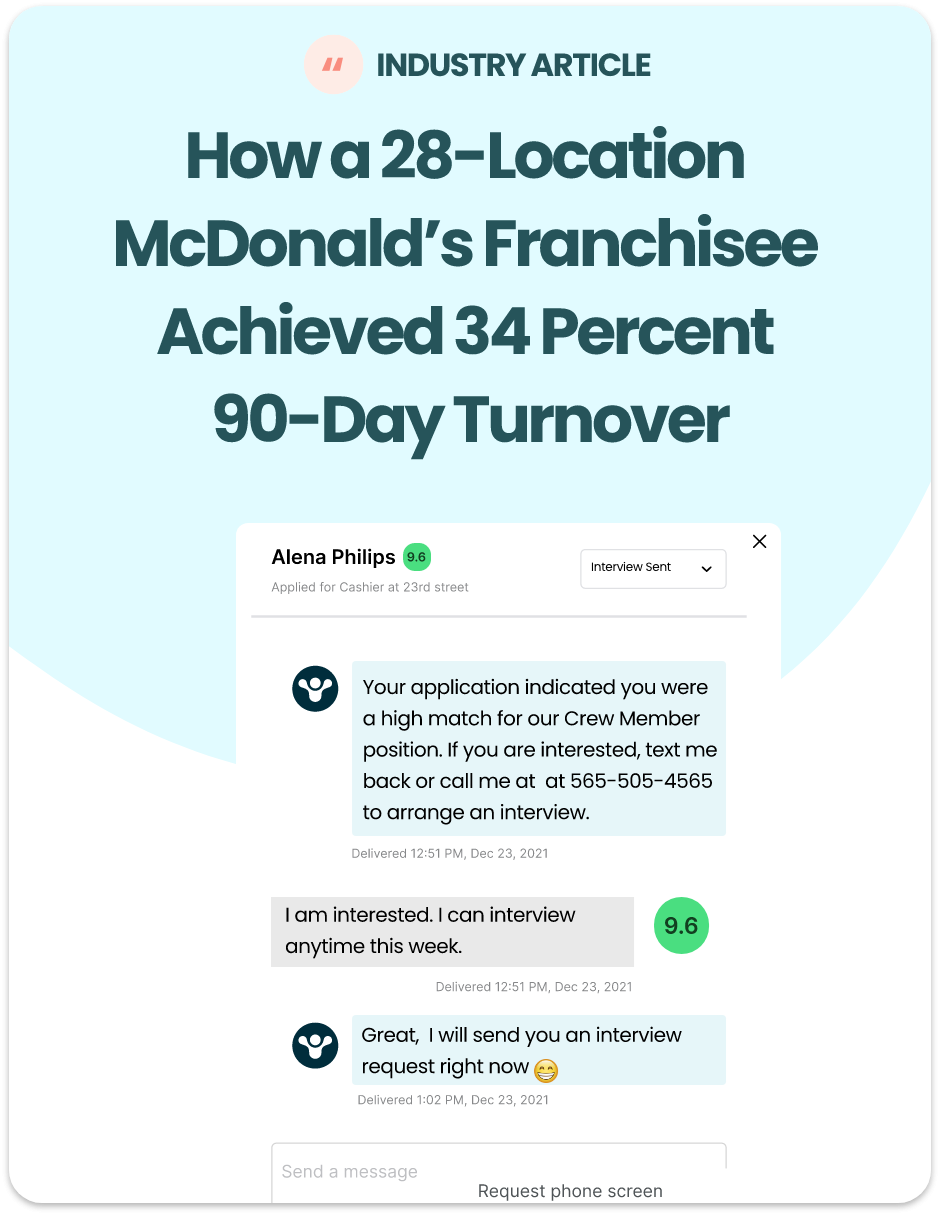With nearly 6.5 million job openings available to workers in the past year alone, it’s important to understand how to communicate with applicants — even if they aren’t a good fit for your business. Continue reading to refresh your memory on best practices for job offers and rejections for non-exempt employees in the hourly workforce. We know your time is valuable, so we even included free templates you can customize to fit your business’s needs.
Why These Points of Communication Are Critical
Each job seeker who takes the time to fill out an application for a position at your business deserves a response. The last thing you want is to burn bridges or create distrust with candidates. Whether they are a good or bad fit, here are reasons communication is key when offering and rejecting opportunities.
Job Offer
The time to hire can take a couple days to a few months, depending on your industry. However, if you want a candidate to work for you, we recommend reaching out as soon as possible before they find a different opportunity. Top performers — especially those in the hospitality industry — usually receive multiple job offers, so the faster you respond, the better. This clear communication will set the tone and give your future employee a good impression of your company.
Job Rejection
Candidates who weren’t the right fit the first time around might be a great fit later. Re-engaging past candidates is a great way to increase your applicant pool and show people you’re willing to give second chances. Additionally, communicating your decision gives your applicants closure and leaves a good impression of your brand.
(Hint: Sprockets’ hiring solution offers re-engagement campaigns to help you reach past applicants!)
Best Practices for Making the Offer
Congratulations, you found the perfect addition to your team! The next step is crafting a job offer. Don’t forget to check your state-specific requirements as they vary. Be sure to include the following items in your job offer:
- Name of Your Company
- Name of the Employee
- Position/Title
- Name/Position of Supervisor
- Schedule
- Start Date
- Compensation
- Non-Exempt Classification and Implications
- Duties
- Policies
- At-Will Employment
- Contingencies
Job Offer Template
Dear [First and Last Name],
We are pleased to offer you a [Full Time or Part Time] position at [Name of Your Company] as a [Title]. You will report directly to [Name of Supervisor], our [Supervisor Title]. Should you accept this opportunity, your employment will be subject to the following terms:
| Start Date | Month, Day, Year |
| Salary | You will receive an hourly rate of $X and |
| Non-Exempt Classification | Under the non-exempt employee classification you must record your hours worked, including meal and rest periods, and overtime hours. |
| Benefits | *Will vary depending on your company* |
| Vacation/Sick/Personal Time | *Will vary depending on your company* |
| Representation | You represent that you are free to accept employment with [Name of Company] without any contractual restrictions, express or implied, of any kind. |
| Policies and Procedures | You agree to fully comply with all of [Name of Company]’s employee policies and procedures. |
| Confidentiality and Non-Compete | You agree to adhere to [Name of Company] confidentiality, non-solicitation, and non-complete policies. |
| At-Will Employment | You understand that in compliance with [State] law, you are an At-Will employee and that this document is not a contract of employment. |
If you accept this offer, please sign and date in the space below. Please return a copy within [X] days. We look forward to having you on our team.
Hope to hear from you soon,
[Your name and signature]
Best Practices for Rejecting
Just like it’s frustrating to be ghosted by your applicants, the last thing job seekers want is to wonder why they were rejected from a position at your company. Ghosting is unprofessional and disrespectful. Applicants took the time to fill out your application, adjust their resume, and maybe even crafted a cover letter. Follow up with a rejection email. The message should be concise and straightforward. You’ll want to thank applicants for applying, explain why they were not selected, and invite them to apply again.
Here are some templates you can use and customize to fit your business’s needs:
Template 1: Emphasize Other Opportunities
Dear [First and Last Name],
Thank you for applying to [Name of Company].
We are unable to offer you a job at this time. Luckily, we anticipate hiring [Number] people between now and [End Date], and you are still under consideration.
Kind regards,
[Your Signature]
Template 2: Opportunities at Multiple Locations
Note: This is a perfect option if you own multiple locations.
Dear [First and Last Name],
Thank you for applying to [Name of Company].
We are unable to offer you a job at this time. However, [Employer X], and [Employer Y], are interested in your profile. Simply respond “yes” to this email to give us permission to share your file with them.
Best wishes,
[Your Signature]
Template 3: Provide the Candidate with Feedback
Dear [First and Last Name],
Thank you for applying to [Name of Company]. We are unable to offer you a job at this time. [Personalized sentence about why they were not selected]. However, we encourage you to improve your [specific skill(s)] and reapply.
Sincerely,
[Your Signature]
Sample Feedback for Rejected Candidates
While there are various reasons applicants are ultimately rejected from a job, common reasons include: lack of industry experience, failure to demonstrate knowledge about the company and required skills, misalignment of values, and not a good team fit.
- Lack of Industry Experience: While it is easier to train for skill and hire for coachability, sometimes businesses need people with specific qualifications. If this is the case, we suggest stating that in your rejection email. For example, you might say, “We encourage you to apply again when you have more experience with [Name of Skill].”
- Failure to Demonstrate Knowledge: This justification usually happens during the interview process. It’s possible an applicant couldn’t give specific examples when asked questions like “Explain a time when you failed and how you overcame that challenge.” Maybe the applicant was underprepared and clearly did not research your business or practice communicating their strengths. Addressing this in a job rejection email might look like, “We encourage you to apply again when you have a better understanding of our company’s mission. Here are some helpful resources.”
- Does Not Fit In With Company Culture: The key to building a high-performance team is to make sure everyone aligns with the company’s values, mission, and beliefs. Sometimes, applicants simply are not a great fit. If this is the case, we recommend the following language in your rejection message: “While you possess many skills we are looking for, we felt the cultural fit was not quite there.”
Predict Applicant Success With This Hiring Solution
Know which candidates will succeed and stay long-term like your current top performers with Sprockets. There’s no need for resumes — our simple one through ten scoring system will tell you everything you need to know about a candidate with pinpoint precision. Plus, Sprockets’ users spend 37% less time on the hiring process, empowering them to focus on daily operations. Hiring has never been easier!






























